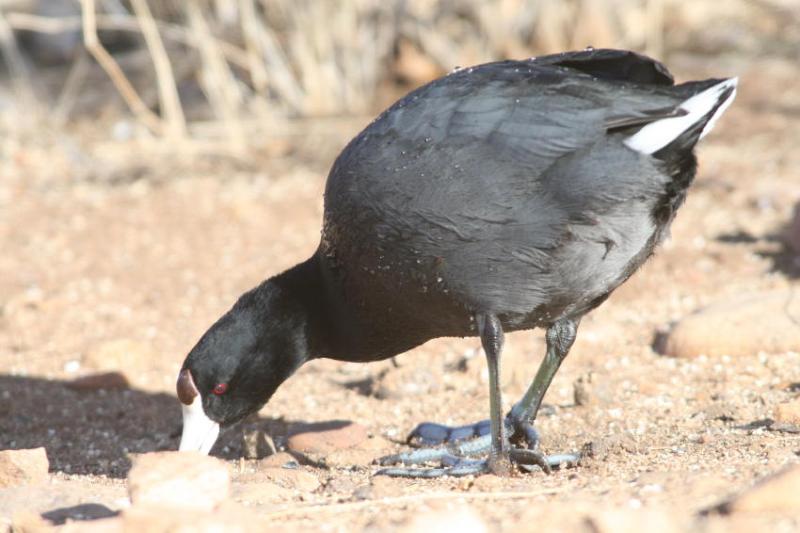The Ubiquitous Coot
By Dave Hanks
The American Coot (sometimes called a Mud Hen) is here, there, and everywhere. If you visit a marsh, pond, or lake; youíre pretty sure to see a coot Ė even though you canít see anything else. They are hiding along the cattails, resting along the shore, or out in the open to find food. Iíve even seen them eating bird seed underneath a feeder.
Iím sure you have seen coots, but did you know that they have pastel blue feet and pastel green legs!! Itís as if they were painted with Easter egg dye! Iíve never really noticed the color of their feet before, because they are usually in the water. Their white beaks and white tail feathers are easily seen, but not their feet. We first noticed them while sitting concealed close to some bird feeders in Southern Arizona. The feeders were close to a lake and the coots were coming up on shore to grab some of the bird seeds.
Coots have toes Ė not webbed feet like ducks. This makes them nimble on land. Each toe has lobed flaps which act as paddles when swimming. Flight for a coot involves a long, laborious taxi over water, so they seldom fly. If alarmed, they will run wild across the water surface flapping their wings, leaving a trail of splashes.
They feed on water plants, small fish, tadpoles, insects, and come on land to eat grass and even acorns. The hen lays two to three broods a year of six to eight eggs. Chicks have sooty down feathers and brilliantly colored heads with a red patch on the front. The parents feed in the daytime, but return to the nest at night to brood the chicks. When breeding season is over, they gather in large groups. This is a guard against aerial attacks, as each individual is harder to single out. They will beat their wings to throw up a shower of water in the face of an attacking hawk.
(Such colorful legs and feet)
|
